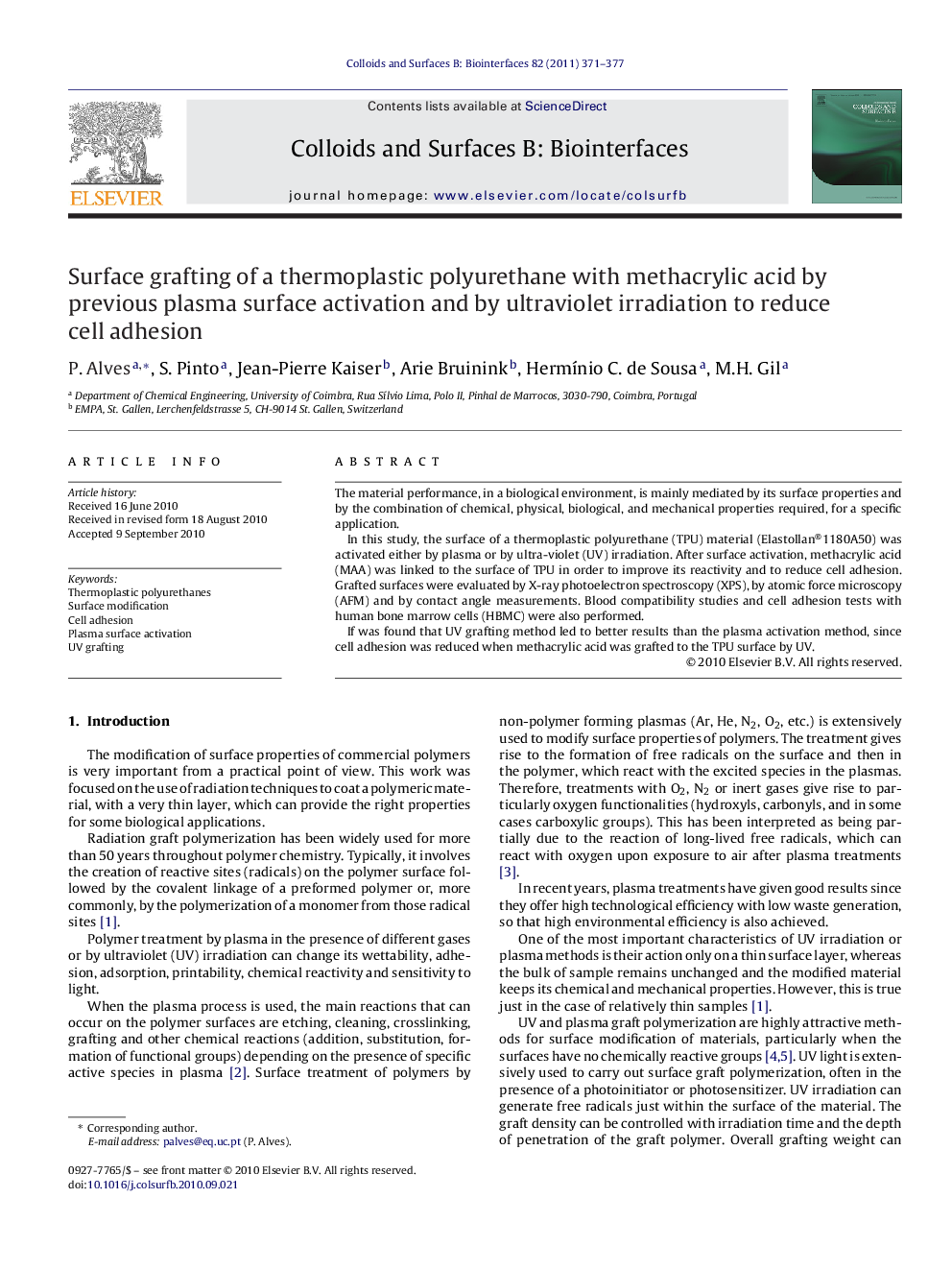| Article ID | Journal | Published Year | Pages | File Type |
|---|---|---|---|---|
| 601324 | Colloids and Surfaces B: Biointerfaces | 2011 | 7 Pages |
The material performance, in a biological environment, is mainly mediated by its surface properties and by the combination of chemical, physical, biological, and mechanical properties required, for a specific application.In this study, the surface of a thermoplastic polyurethane (TPU) material (Elastollan®1180A50) was activated either by plasma or by ultra-violet (UV) irradiation. After surface activation, methacrylic acid (MAA) was linked to the surface of TPU in order to improve its reactivity and to reduce cell adhesion. Grafted surfaces were evaluated by X-ray photoelectron spectroscopy (XPS), by atomic force microscopy (AFM) and by contact angle measurements. Blood compatibility studies and cell adhesion tests with human bone marrow cells (HBMC) were also performed.If was found that UV grafting method led to better results than the plasma activation method, since cell adhesion was reduced when methacrylic acid was grafted to the TPU surface by UV.
